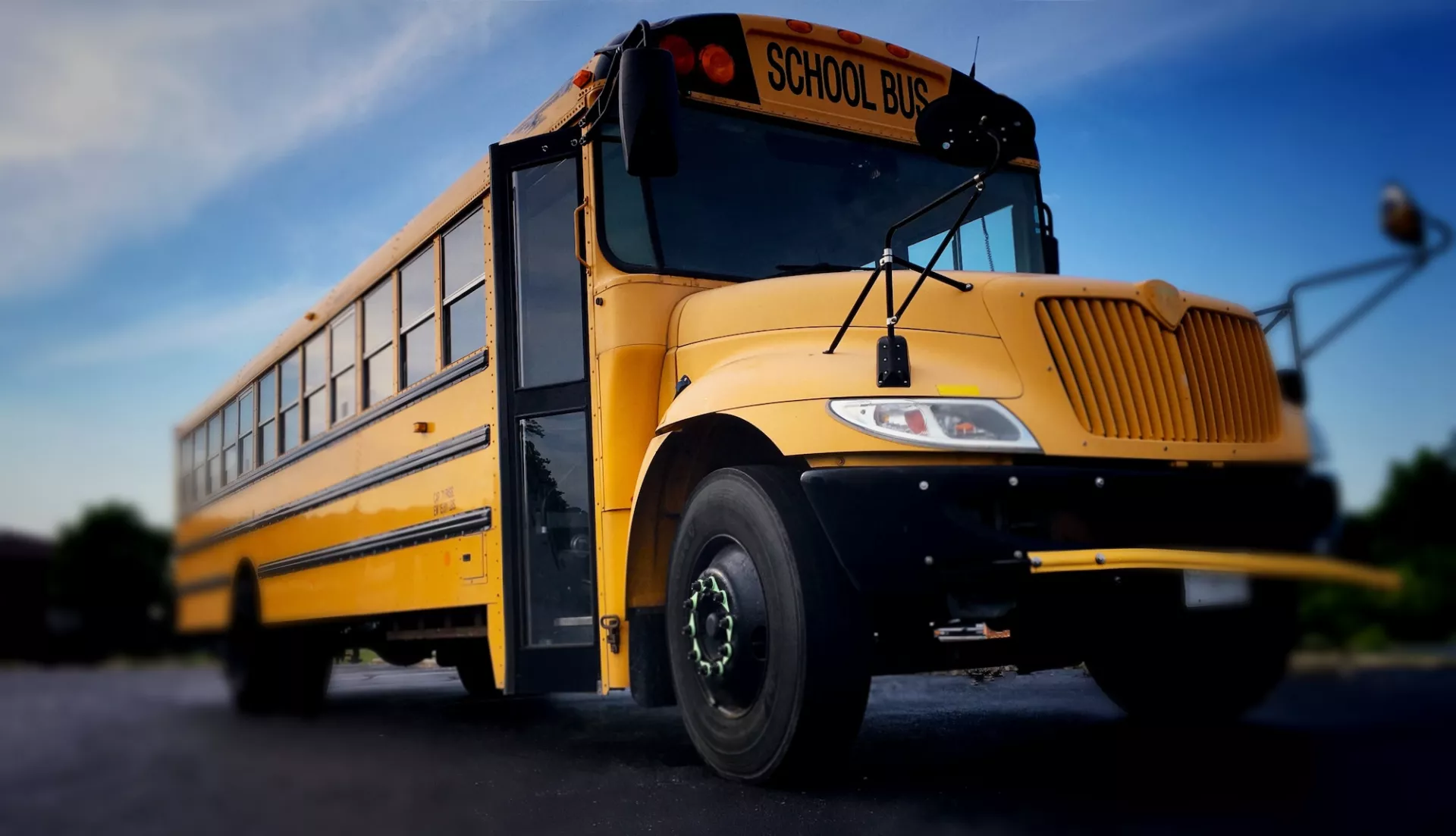Key Takeaways
- New research shows school bus driver employment continues to be far below pre-pandemic levels.
- Interrupted services and instability can disrupt learning time and contribute to absenteeism.
- Privatization is not the answer. Not only do cost savings dwindle after the privatizer gets the initial contract, but so does the quality of the service.
As the school bus driver shortage drags on, there are just 27 drivers for 35 routes in the Santa Fe, New Mexico, school district. And that’s after six routes had to be eliminated.
“Parents were upset, kids were upset, everyone was upset,” says longtime Santa Fe school bus driver Randy Mondragon.
The problem remains severe across the country. According to research by the Economic Policy Institute, school bus driver employment continues to be far below pre-pandemic levels. There were approximately 192,400 bus drivers working in K–12 schools in September 2023, down 15.1% from September 2019.
School bus drivers remain a vital part of the education system. Roughly half of school children rely on bus services to get to school. Interrupted services and instability can disrupt learning time and contribute to absenteeism, EPI reported.
It’s particularly challenging for children with disabilities, who sometimes travel far distances for specialized education.
Although the worst health threats of the pandemic have abated, the EPI report found that school bus drivers are still sharply impacted by the pandemic’s fallout. School bus drivers tend to be significantly older than the typical worker. In 2021, 72.6% of state and local government school bus drivers were age 50 and older, compared with 37.5% of state and local government employees and 30.8% of private-sector workers. The age makeup of the school bus driver workforce made these workers more vulnerable to the effects of COVID, contributing to workers leaving the profession and being reluctant to return.
At the same time, some retirees have expressed interest in driving a school bus, but Mondragon says a lot of them are unable to pass the physical.
Another barrier is the testing and training, which in his district is offered only in English.
“We’d have a lot more nonnative English drivers if we could offer the test in Spanish,” he says. “They speak English but are intimidated by the written test because it’s not in their first language.”
Low Pay Means Fewer Drivers
School bus driver wages are far lower than most other workers, according to EPI’s analysis of Current Population Survey (CPS) microdata.
The typical school bus driver earned $20.00 an hour in 2022, which is 16.8% less than the median wage for all workers in the economy ($24.04). However, the average public school bus driver works only around 32 hours per week, meaning that the weekly wages for bus drivers are significantly lower than the hourly wage might imply.

School bus drivers often are not full-time employees and instead work a “split-shift” schedule coinciding with the beginning and end of the school day.
Hourly wages for the average worker grew 5.3% between 2008 and 2019, while growth was only 1.5% for school bus drivers. During the same period, weekly wage growth for school bus drivers (7.0%) slightly outpaced the median (5.6%). This is because school bus driver hours grew modestly over the decade, presumably because employment decreases and student enrollment increases required more hours of work to be filled by fewer workers.
From 2019 to 2022, hourly wages for school bus drivers increased by 4.9%, a welcome increase over the post-Great Recession period but still lagging median worker wage growth (5.7%).
School Bus Drivers Earn Poverty Wages
Further wage increases are badly needed for a profession that must recruit new workers, especially since current low wages mean many bus drivers live in poverty, EPI reported.
In 2021, 7.8% of school bus drivers had incomes below the poverty line, which is greater than the 5.6% share of private-sector workers in poverty and more than double the 3.4% of public-sector workers in poverty.
Mondragon had a superintendent admit that he could do every job in the district except drive a school bus, but he’s also had administrators tell him, “you’re just a bus driver.”
“But this matters,” Mondragon says. “Education takes a village. Everyone needs to be respected and paid fairly.”
He encourages administrators to come on the bus with him to get a sense of what the job is like.
“You show up at 5:00 am, sometimes in snow, it’s cold, and the tank is empty because someone didn’t fill it up, so you go do that,” he says. “And then you go pick up the first kids and try to be nice while listening to angry parents complaining that you’re late, but it’s snowing and slow going!”
Before long, there are 72 kids on the bus, most of them yelling, and sometimes jumping around or even fighting. It is extremely stressful trying to maintain order while driving a large bus full of children and also keeping an eye out for those drivers who go around a stopped bus.
“Once I saw a car speeding around as a third grader was exiting, and I grabbed her by the backpack and yanked her up so she wouldn’t be killed,” Mondragon recalls.
“Driving the actual bus is the easy part,” he adds. “All the rest is what’s hard.”
Complicating all of this is that some districts try a quick fix of outsourcing their student transportation. In fact more than a third of districts use private bus companies. The results are often disappointing.
Not only do cost savings dwindle after the privatizer gets the initial contract, but so does the quality of the service. Transporting students is not like transporting freight. Kids need caring drivers, committed to their jobs and rooted in their communities, just as Randy Mondgragon has been for decades. Moreover, they need the consistency of a familiar face and reliable smile, not a new stranger every week who needed some spare cash.
What Can We Do?
School bus drivers need to speak up and make their voices heard, Mondragon says.
“We have a right as humans, and as Americans and be respected and be heard and given what we deserve.”
An effective public education system depends on critical support staff to run effectively. The current bus driver shortage is a result of more than a decade of disinvestment in these professionals, the EPI report states.
The unfair burden of these disruptions is most damaging to the education and well-being of the students who need it the most, particularly students with disabilities. In light of these disruptions, it is imperative that state and local policymakers, school districts, and communities act to fairly compensate and invest in their bus drivers and other school support staff.


